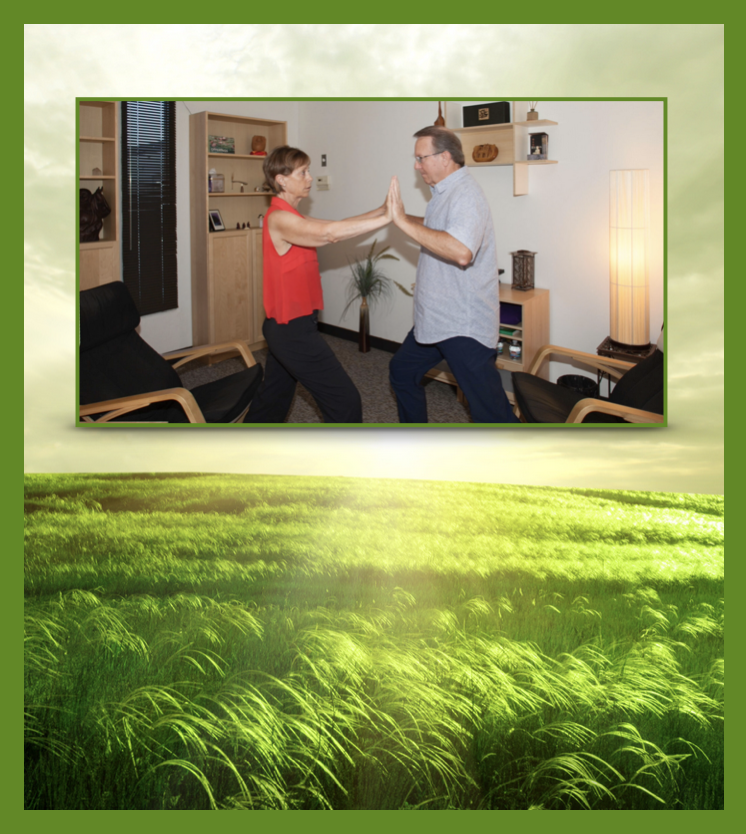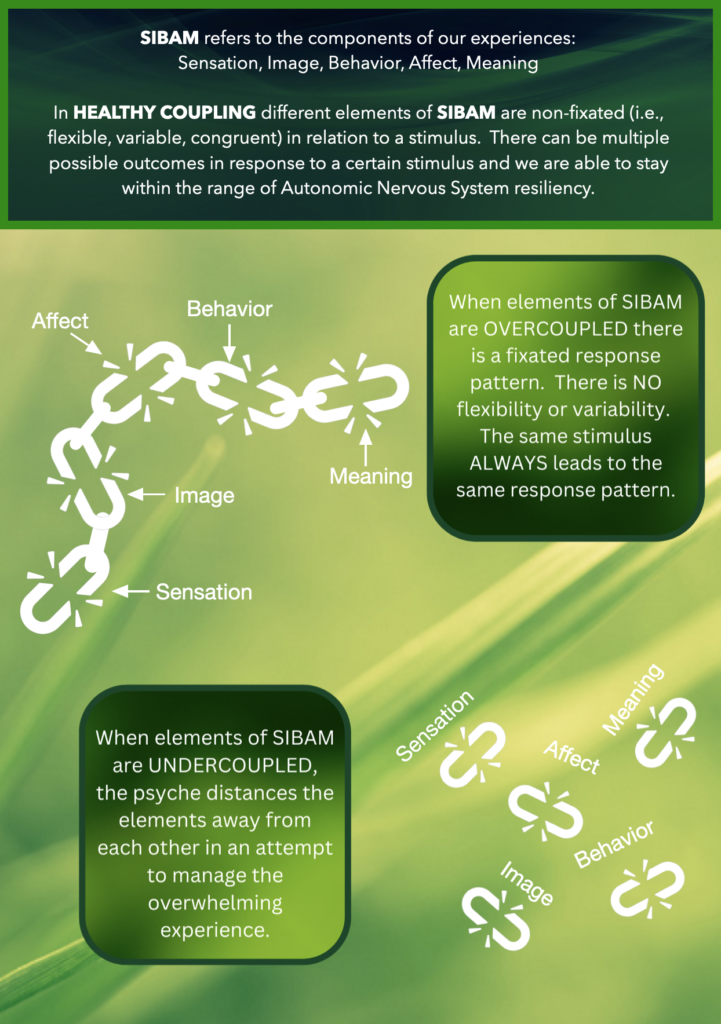What happens in a
Somatic Experiencing Session?

The first thing we do, as SE Practitioners, is establish an environment of relative safety by offering a calm, centered presence. We strive to provide a “safe haven” as well as offer hope and possibility. In doing so, the client’s distress begins to lessen.

Next, we begin to help the client to be “OK” with their sensations and feelings. We help them to access, tolerate and utilize their sensations rather than interpreting those sensations as a signal that something bad is about to happen. We do this, in part, by helping the client to develop the capacity for self-soothing. We help the client to rock back and forth between fear and resistance to acceptance and exploration.
By doing so, the client, over time, can stop avoiding their sensations, denying their sensations, or distracting themselves from those sensations. And this in turn, helps the client to restore their capacity for self-regulation.
“This too shall come to an end,” as my Zen Teacher used to say, describes another component of SE Sessions. We help the client to get “unstuck” – less “frozen in time”. The client starts to sense, from the inside, that no matter how uncomfortable or even horrible one is feeling in the moment, that those sensations and feelings can and will change!
In this process, the client moves toward self-empowerment and their confidence builds. The body of the client starts to be perceived as an ally rather than an enemy. Clients learn, from the inside, to shift from discomfort and stress to relative ease – and from contraction to expansion.
It is important for clients to know that the process of re-negotiation is carried out in a titrated manner. TITRATION is one of the primary keys to processing physiological shock trauma without overwhelming and/or without re-traumatizing the client. This process, along with the discharge of the bound energy, is what reduces the hyperarousal.
Titration is sort of akin to dropping just a tiny bit of a seltzer tablet – just a small pinch – into a large pail of water. There would be a tiny “fizzle” but soon, the water would again be calm. We do this process repeatedly, but carefully, so as not to lead to an explosive abreaction. Titration refers to this gradual stepwise process.
Inherent in the re-negotiation of shock trauma is the restoration of active and healthy protective responses. Perhaps, for some reason, in a moment of threat, we were not able to do what our bodies wanted to do, to protect us! Perhaps everything simply happened too quickly, as was the case when I was struck by a car as a pedestrian.
My body undoubtedly wanted to both “fight” (stop the car from hitting me) and/or “flee” to avoid being struck by the car. I was not able to do either. So those impulses remained stuck in my body in the form of excessive muscle tension which ultimately led to chronic pain chronic fatigue.
Here the SE therapist becomes a bit like a detective – noticing small “micro movements” which might indicate a healthy protection response starting to emerge. The SE practitioner guides the client to complete that protective response in a safe environment and in a safe manner. This “completion” or “restoration” of these active protective responses, leads to
empowerment. The client begins to feel powerful – capable – rather than powerless or helpless.
Without this restoration, the client can go through life feeling as though their hands and feet are tied, leaving them unable to protect themselves from a threat to their survival. They are in essence, stuck in fear.


Uncoupling fear from immobility is also an important part of re-negotiating shock trauma. Going into and coming out of the hard-wired (biologically programmed) immobility response is an important key to avoiding the possible prolonged effects of shock trauma. As SE practitioners, we attempt to separate fear and helplessness from what is ideally a time-limited biologically programmed immobility response.
This can be tricky because individuals have fear around entering the immobility response. This is because to sense into that is to feel helpless and vulnerable. There can also be a fear of exiting the immobility response, because they fear the predator is still there ready to re-attack. Also, there is often a great deal of rage that has been suppressed, and the person fears that if they come out of the immobility response, they might kill someone. So this is quite a dilemma. If they allow themselves to “exit” the immobility response, they fear they may either kill someone, or be killed. Skilled SE practitioners use titration and pendulation to guide a person through this process.
In the exit from immobility, one may experience waves of involuntary shaking and trembling, followed by spontaneous changes in breathing – from tight and shallow to deep and relaxed. Micro movements of the defensive responses that were left incomplete, may also emerge. Sometimes this energetic release is dramatic . . . other times subtle. This, is, of course, an over-simplification of what occurs at this stage, but nonetheless, should suffice for our purposes.
Last, part of the re-negotiation process involves Coupling Dynamics. It involves bringing back in the under coupled pieces of one’s experience, and separating “stuck together” pieces of one’s experience. “Coupling Dynamics” is again tricky, because of the bound energy involved when someone experiences an overwhelming event that they were unable to integrate. Some of that bound energy is released when over-coupled elements of one’s experience are separated… and/or when the under-coupled elements of one’s experience are brought back into one’s awareness. Titration, once again, is key here.
The SE process, (again over-simplified here), results in the restoration of a state of dynamic equilibrium.
The capacity to be present
in the here and now is restored.
Embodied social engagement is restored.
Our social engagement system is intrinsically self-calming and therefore serves as a built-in protection against being hijacked by our sympathetic arousal system.
(This content is drawn from In an Unspoken Voice by Dr. Peter Levine.)

